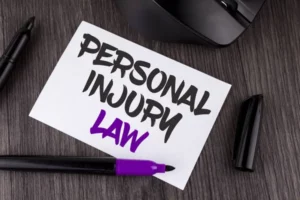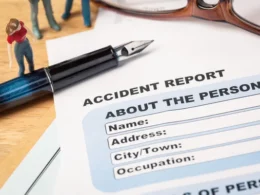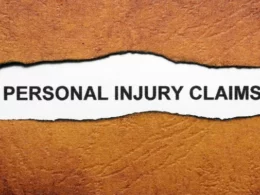When someone is injured due to another party’s negligence, they may be entitled to compensation for their damages.
This compensation can be obtained through a personal injury settlement, which is an agreement between the injured party and the at-fault party or their insurance company.
While settlements can provide a quicker and less expensive resolution than going to trial, many people wonder how long the process will take.
The length of time it takes to reach a settlement can vary depending on several factors.
According to a study, the average time for a personal injury settlement from start to finish is a little less than a year.
However, every case is unique, and some can take much longer to resolve. Factors that can affect the timeline include the severity of the injuries, the complexity of the case, and the willingness of the parties to negotiate.
Factors Affecting the Duration of Personal Injury Settlement
Nature and Severity of Injury
The nature and severity of the injury are some of the most significant factors that affect the duration of a personal injury settlement.
The more severe the injury, the longer it may take to settle the case. A severe injury can result in a more extended recovery period, which can make it challenging to determine the full extent of the damages.
Additionally, the injured party may need to undergo extensive medical treatment, which can prolong the settlement process.
On the other hand, minor injuries may be resolved more quickly. For instance, if the injury is a sprain or a strain, the case may be settled within a few months.
However, it is important to note that even minor injuries can become more complicated if there are underlying medical conditions or if the case involves disputed liability.
Type of Insurance Coverage
The type of insurance coverage also plays a significant role in determining the length of a personal injury settlement.
If the at-fault party has a liability insurance policy, the claim may be settled more quickly.
However, if the at-fault party is uninsured, the injured party may need to pursue a lawsuit to recover damages, which can significantly prolong the settlement process.
Also, the type of insurance policy may impact the settlement process.
For instance, if the at-fault party has a policy with a low coverage limit, the injured party may need to pursue other sources of compensation, such as their own insurance policy or the at-fault party’s assets.
This can lead to a more extended settlement process.
Amount of Compensation Sought
The amount of compensation sought is another factor that can impact the duration of a personal injury settlement.
If the injured party is seeking a significant amount of compensation, the insurance company may be more likely to dispute liability or the extent of the damages.
This can lead to a more extended settlement process as the parties negotiate to reach a fair settlement.
Moreover, if the injured party is seeking non-economic damages, such as pain and suffering, the settlement process may be more complicated.
Non-economic damages are subjective and can be challenging to quantify, leading to more extended negotiations.
Overall, there are several factors that can impact the duration of a personal injury settlement.
The nature and severity of the injury, type of insurance coverage, and amount of compensation sought are just a few of the key factors to consider.
It is important to work with an experienced personal injury attorney who can help navigate the settlement process and achieve a fair and timely resolution.
Stages of Personal Injury Settlement
When a person is injured due to someone else’s negligence or intentional act, they may be entitled to compensation for their damages.
However, the process of reaching a settlement can be lengthy and complex. Here are the stages of a personal injury settlement:
Demand Letter
The first stage of a personal injury settlement is the demand letter.
This is a formal letter that outlines the damages suffered by the injured party and demands a specific amount of compensation from the at-fault party or their insurance company.
The demand letter should include a detailed account of the accident, the injuries sustained, and any medical treatment received.
It should also include an itemized list of damages, such as medical bills, lost wages, and pain and suffering.
Negotiation
After the demand letter is sent, the at-fault party or their insurance company will respond with a counteroffer.
This stage involves back-and-forth negotiations between the parties to reach a settlement amount that is agreeable to both sides.
Negotiations can take weeks or months to complete.
Mediation
If negotiations are unsuccessful, the next stage is mediation.
Mediation is a process in which a neutral third party, called a mediator, helps the parties reach a settlement.
The mediator listens to both sides and helps them come to an agreement. Mediation can be a faster and less expensive alternative to going to court.
Litigation
If mediation is unsuccessful, the final stage is litigation.
Litigation involves filing a lawsuit and going to court. This stage can take the longest and be the most expensive.
It can take several months or even years to reach a verdict. However, if the case goes to trial, the injured party may be awarded a higher amount of compensation than they would have received through a settlement.
Overall, the length of time it takes to settle a personal injury claim can vary depending on the specific circumstances of the case.
However, by understanding the stages of a personal injury settlement, injured parties can be better prepared for the process and have a better chance of reaching a fair settlement.

In summary the steps in a personal injury claim involves:
A. Initial consultation with an attorney: The first step in the settlement process is for the victim to meet with an attorney to discuss the details of the accident or injury. The attorney will evaluate the case to determine if there is a valid claim, and will explain the legal process and the victim’s rights.
B. Investigation and evidence gathering: If the attorney decides to take the case, they will begin an investigation and gather evidence to support the claim. This may include reviewing medical records, interviewing witnesses, and consulting with experts such as medical professionals and accident reconstruction specialists.
C. Demand letter and negotiations: Once the attorney has gathered all relevant evidence, they will prepare a demand letter outlining the damages suffered by the victim and present it to the responsible party or their insurance company. Negotiations may take place to reach a settlement agreement.
D. Filing a lawsuit (if necessary): If a settlement cannot be reached through negotiation, the attorney may file a lawsuit on behalf of the victim. This step is often a last resort, as lawsuits can be time-consuming and expensive.
E. Discovery and pre-trial motions: If a lawsuit is filed, the parties exchange information and evidence through a process called discovery. The attorneys may also file pre-trial motions to resolve certain legal issues before the trial.
F. Mediation and settlement conference: Before the trial takes place, the parties may participate in mediation or a settlement conference with a neutral third party. The mediator or conference facilitator will help the parties reach a settlement agreement.
G. Trial (if necessary): If a settlement cannot be reached through negotiation or alternative dispute resolution methods, the case will go to trial. At trial, the victim’s attorney will present evidence and arguments to a judge or jury, and the responsible party’s attorney will do the same. The judge or jury will then make a decision and award damages if appropriate.
Average Timeframe for Personal Injury Settlement
When someone is injured in an accident, the process of filing a personal injury claim can be long and complicated.
One of the most common questions that people have when filing a personal injury claim is how long it will take to reach a settlement.
While there is no universal answer to this question, there are certain factors that can affect the average timeframe for a personal injury settlement.
Factors that Affect the Average Timeframe
Several factors can affect the average timeframe for a personal injury settlement. Some of the most common factors include:
- The complexity of the case: If the case is complex, it may take longer to reach a settlement. For example, if there are multiple parties involved or if liability is unclear, the case may take longer to resolve.
- The severity of the injuries: If the injuries are severe, the case may take longer to resolve. This is because the injured party may need more time to recover, and the medical bills may be higher.
- The negotiation process: The negotiation process can also affect the timeframe for a personal injury settlement. If the parties are unable to reach an agreement, the case may go to trial, which can extend the length of the case.
Average Timeframe for Common Personal Injury Cases
The average timeframe for a personal injury settlement can vary depending on the type of case. Here are some examples:
| Type of Case | Average Timeframe |
|---|---|
| Car Accident | 9-18 months |
| Slip and Fall | 6-12 months |
| Medical Malpractice | 2-3 years |
| Product Liability | 1-4 years |
It’s important to note that these timeframes are just averages and can vary depending on the specific circumstances of the case.
Nonetheless, some cases may settle more quickly, while others may take longer to resolve.
Conclusion
Personal injury settlements can take anywhere from a few weeks to several years to complete. The length of time it takes to settle a case depends on several factors, including the severity of the injuries, the complexity of the case, and the willingness of the parties to negotiate.
While some cases settle quickly, others can drag on for years. It is important to remember that the goal of a personal injury settlement is to compensate the victim for their losses, not to rush through the process and accept a lowball offer.
Victims should work closely with their attorneys to determine a fair settlement amount and to negotiate with the other party’s insurance company. In some cases, it may be necessary to file a lawsuit and go to trial to get the compensation that the victim deserves.
In conclusion, the personal injury settlement process can be lengthy and complex, but with the right team of professionals on your side, you can ensure that you get the compensation that you deserve.
YOU SHOULD ALSO READ:
- Medical Negligence After Miscarriage: Causes, Effects, and Legal Options
- Can You Get Legal Aid for Medical Negligence? Explained
- Medical Negligence: Broken Leg Cases and Compensation
- Can You Sue a County Jail for Medical Negligence? Exploring Your Legal Options
- Medical Claims vs Pharmacy Claims: Everything You Need To Know











